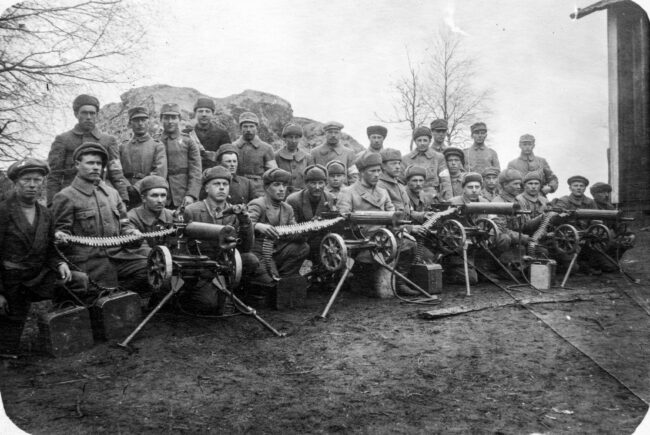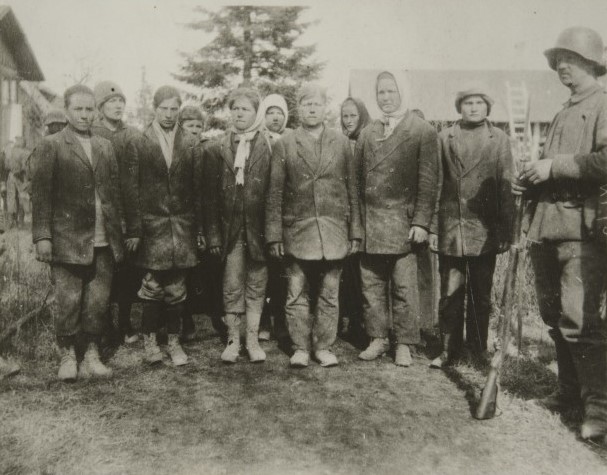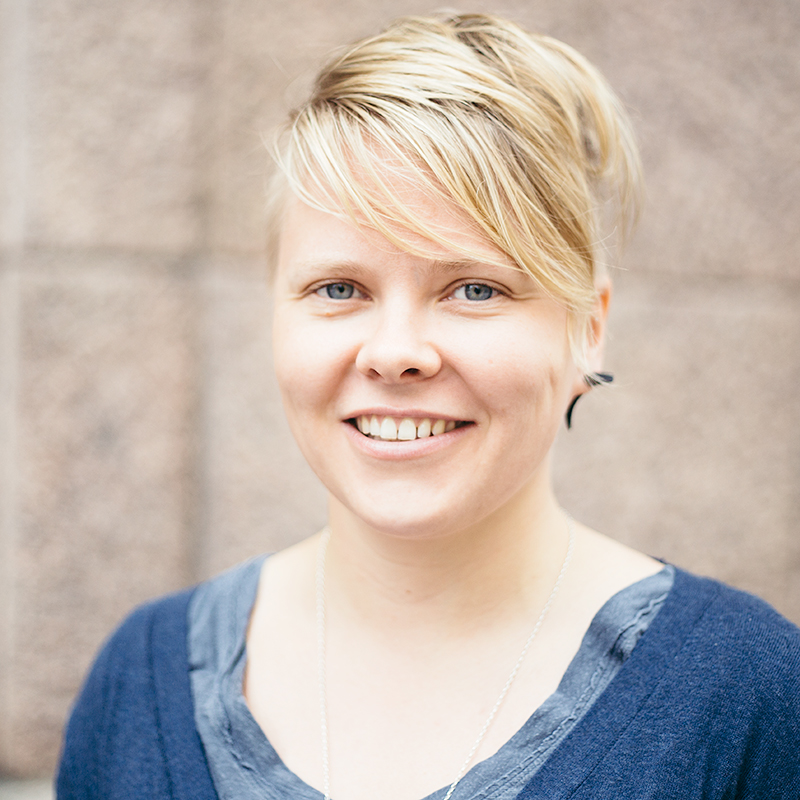

White machine gun company posing after the occupation of Tampere during the Finnish Civil War 1918 / Photo: Museum Centre Vapriikki Photo Archives.
White machine gun company posing after the occupation of Tampere during the Finnish Civil War 1918 / Photo: Museum Centre Vapriikki Photo Archives.
The past 100 years have seen many changes in the teaching of the narrative of the Finnish Civil War. Adult education and independent studying are ways of receiving an up-to-date history lesson.
2018 marks the centennial of one of the bloodiest civil wars in Europe. After declaring independence in December 1917, Finns fought a four-month-long war to determine how the country should be run.
This year, only a few adult education centres in Finland are not offering a history class or a lecture on the subject.
In 1918, the industrial and agrarian ‘Reds’, led primarily by the Social Democratic Party, fought the peasants and middle- and upper-class ‘Whites’, led by the anti-Socialist, Conservative Senate. The Reds were supported by Bolshevist Russia, while the winning Whites received military assistance from the German Empire.
Historical events are always looked at and understood from the perspective of the present. History will always change even if the past does not.
Almost 40,000 people died in the bitter fighting and the war’s aftermath, amounting to more than 1% of the population.
There is never just one truth in history
As the Civil War divided the Finnish people and can still be a difficult topic for Finns today, there have been divergent phases in the teaching of the brutal story over the past hundred years. History as cultural heritage is versatile and rooted in the needs of the time and the current atmosphere.
Pertti Haapala, Professor of Finnish History says it is quite a normal process.
Silence reigned and the Freedom War myth, according to which the Whites had rescued the homeland from the Russians and the traitors supporting them, remained intact until the 1950s.
“There is no single truth in history, and I have a cynical take on that. Historical events are always looked at and understood from the perspective of the present. History will always change even if the past does not.”
How you were taught about the Civil War depends on when you went to school.
From right after the war until the 1940s, the history of the events was told only from the winning Whites’ point of view. The Civil War was officially named the Freedom War. The logic behind this was that the Whites fought for the freedom and independence of the Finnish people. They suppressed the Red Revolution and drove the Russian soldiers from the country.
The terror of the Reds or the Whites was not articulated for decades. Silence reigned and the Freedom War myth, according to which the Whites had rescued the homeland from the Russians and the traitors supporting them, remained intact until the 1950s.
“There has been and is much mythology and elements of identity around the narrative of the Civil War. There is always a chance that the narrative becomes one-sided, but it can also become diverse if research is free and independent,” says Haapala.
Academic studies on the war did not start at all until the 1940s, and it was not until the 1960s, due to Finnish higher education expansion, that more students from a Red background were admitted to universities and, also for that reason, research started to become more varied.
The 1980s was when it became widely accepted that there were two different truths about the war. Then, starting from the 1990s, the war was no longer studied from the point of offenders and the guilty, but from the experiences and ordeals of people. The neutral term ‘Civil War’ did not for example take root until the 1990s. Before that, the term that you used defined your own perspective on the war.
The latest takes on the history of the Civil War are microhistories of, for example, women or children. Nowadays the war is also becoming increasingly linked to world history, the Russian revolution and the First World War.

Captured Red women in Syrjäntaka 1918. / Photo: Wikimedia Commons
Common cultural heritage can be formed only through understanding
The passing of time alone is not enough to heal the scars and change the attitudes that remain from the brutal ideological conflict.
“Political climate, history research and popular culture are the fundamentals that enable the narrative of history to change,” says Professor of History and Social Studies Jukka Rantala. His main focus in the history of education has been on the formation of Finnish pedagogy and the political ethos of Finnish teachers.
Rantala sees informal education and self-study as key parts of understanding the bigger picture.
One hundred years have passed and there are still many views.
To get rid of persistent attitudes that may have lingered for generations, one needs to see many sides of the events and understand the circumstances and motives of each party. This was not done in history teaching in the past decades. Historical empathy is gained from the willingness to study and learn about historical events once more, but from another perspective.
“Finns are exceptionally interested in history and their cultural heritage. Adult education on history is done through novels, films, museums and lectures. Even if you went to school in the 1950s, and received the historical narrative common at that time, it would be impossible to be unaware of the new aspects of history teaching nowadays,” says Rantala.
“Although the founding roots of informal adult education centres are quite often ideologically on either side of the civil war, the present-day history teaching they provide is not coloured,” says Rantala.
Adult educators teaching history provide the same education as other teachers.
“One hundred years have passed and there are still many views. However, adult educators are academic professionals and it would be hard to imagine present-day history teaching being biased at any educational institute in the country.”
For this article, Dr. Ulla-Maija Peltonen was also interviewed.
Author







